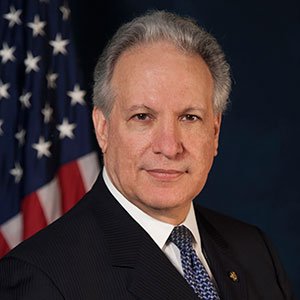Estimates from the National Highway Traffic Safety Administration show drowsy driving was responsible for 72,000 crashes, 44,000 injuries and 800 deaths in 2013, but those numbers are inexact and could be far higher. Mark

Since taking on his current role in January 2015, Rosekind has made drowsy driving one of four NHTSA safety priorities, which already include drunk, drugged and distracted driving. He was one of several speakers to take the podium at what was called the nation's first drowsy driving summit, held Wednesday at the University of Iowa's College of Public Health building.
During his presentation, he said a lack of sleep impairs safety, health, performance — like concentration and reaction time — and mood. When mixed with driving, it can be fatal. The difficulty, though, is figuring out just how many people are at risk.
"Measuring this is not like having a breathalyzer, and that's the biggest problem. If you think somebody's got a problem with alcohol, you pull them over, they blow into a breathalyzer and you can actually quantify it. You can't do that with drowsiness," Rosekind said. "We know from the science it's related to sleep loss, how much sleep they've had, how long they've been awake, their internal clock. There all these physiological factors, but you pull somebody over on the roadside you can't get to any of that. And that's why it's underestimated, and because it's underestimated, people think it's not a big deal. In reality it's actually a huge deal."
Rosekind said more recent estimates show the number of collisions caused by drowsy driving could be as high as 1.2 million, causing potentially 5,000 to 8,000 fatalities per year.
"They're big numbers. Even the estimates are big numbers, and even those may underestimate what's going on out there," Rosekind said.
A panel of University of Iowa professors and researchers presented work that has been ongoing for years at the university, like exploring the effects of sleep deprivation and prescription drug use on cognition, at UI's National Advanced Driving Simulator and in the development of car safety features.
UI researcher Dan McGehee, during the presentation described new in-vehicle technologies that could reduce drowsy driving in the future. In the same way an engine light on the dashboard appears, a sensor could send a similar alert if drifting or swerving were detected. The technology also could include lane departure warnings, lane-keeping automated steering and automatic emergency braking.
The National Safety Council and UI partnered to create a new website, mycardoeswhat.org, which includes videos and information about the features.
Iowa Gov. Terry Branstad also spoke at the summit and said the state needs to take action on drowsy driving.
"This drowsy driving initiative is a great example of a public awareness campaign that I believe can make a real difference in reducing accidents. In order for initiatives like this to succeed, it's vital that we have a strong relationship between the organizations and agencies both within and outside of our state. These are groups that contribute nationally to reducing crashes," Branstad said.
While he said legislation aimed at reducing drowsy driving could be introduced in 2017, it's "too early, I think, to try and say" what it would look like.
In his closing remarks, Rosekind said there is no simple solution for ending drowsy driving. With a 24-7 lifestyle that works against humans' biological need for sleep, he said the best place to start — and to see how difficult it is to solve the problem — is with yourself.
"Start making changes with yourself," Rosekind said.